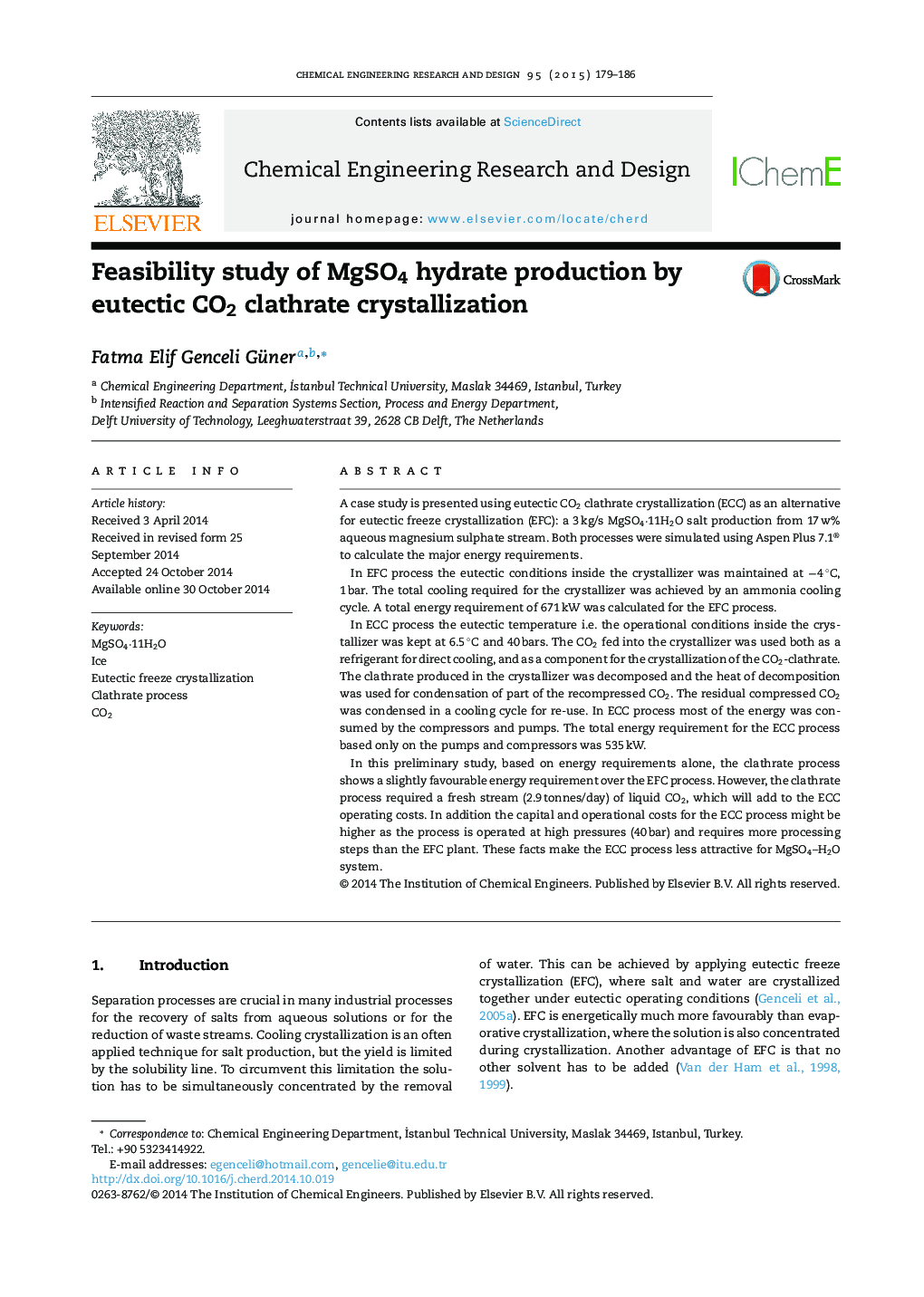| کد مقاله | کد نشریه | سال انتشار | مقاله انگلیسی | نسخه تمام متن |
|---|---|---|---|---|
| 620548 | 1455173 | 2015 | 8 صفحه PDF | دانلود رایگان |

• ECC and EFC are compared for MgSO4 production using AspenPlus7.1 simulation.
• Total energy requirements for EFC and ECC are 671 kW and 535 kW respectively.
• ECC shows a slightly favourable energy requirement over EFC process.
• However, capital and operational costs for ECC process are expected to be higher.
• Thus ECC process is less attractive for MgSO4–H2O system.
A case study is presented using eutectic CO2 clathrate crystallization (ECC) as an alternative for eutectic freeze crystallization (EFC): a 3 kg/s MgSO4·11H2O salt production from 17 w% aqueous magnesium sulphate stream. Both processes were simulated using Aspen Plus 7.1® to calculate the major energy requirements.In EFC process the eutectic conditions inside the crystallizer was maintained at −4 °C, 1 bar. The total cooling required for the crystallizer was achieved by an ammonia cooling cycle. A total energy requirement of 671 kW was calculated for the EFC process.In ECC process the eutectic temperature i.e. the operational conditions inside the crystallizer was kept at 6.5 °C and 40 bars. The CO2 fed into the crystallizer was used both as a refrigerant for direct cooling, and as a component for the crystallization of the CO2-clathrate. The clathrate produced in the crystallizer was decomposed and the heat of decomposition was used for condensation of part of the recompressed CO2. The residual compressed CO2 was condensed in a cooling cycle for re-use. In ECC process most of the energy was consumed by the compressors and pumps. The total energy requirement for the ECC process based only on the pumps and compressors was 535 kW.In this preliminary study, based on energy requirements alone, the clathrate process shows a slightly favourable energy requirement over the EFC process. However, the clathrate process required a fresh stream (2.9 tonnes/day) of liquid CO2, which will add to the ECC operating costs. In addition the capital and operational costs for the ECC process might be higher as the process is operated at high pressures (40 bar) and requires more processing steps than the EFC plant. These facts make the ECC process less attractive for MgSO4–H2O system.
Journal: Chemical Engineering Research and Design - Volume 95, March 2015, Pages 179–186